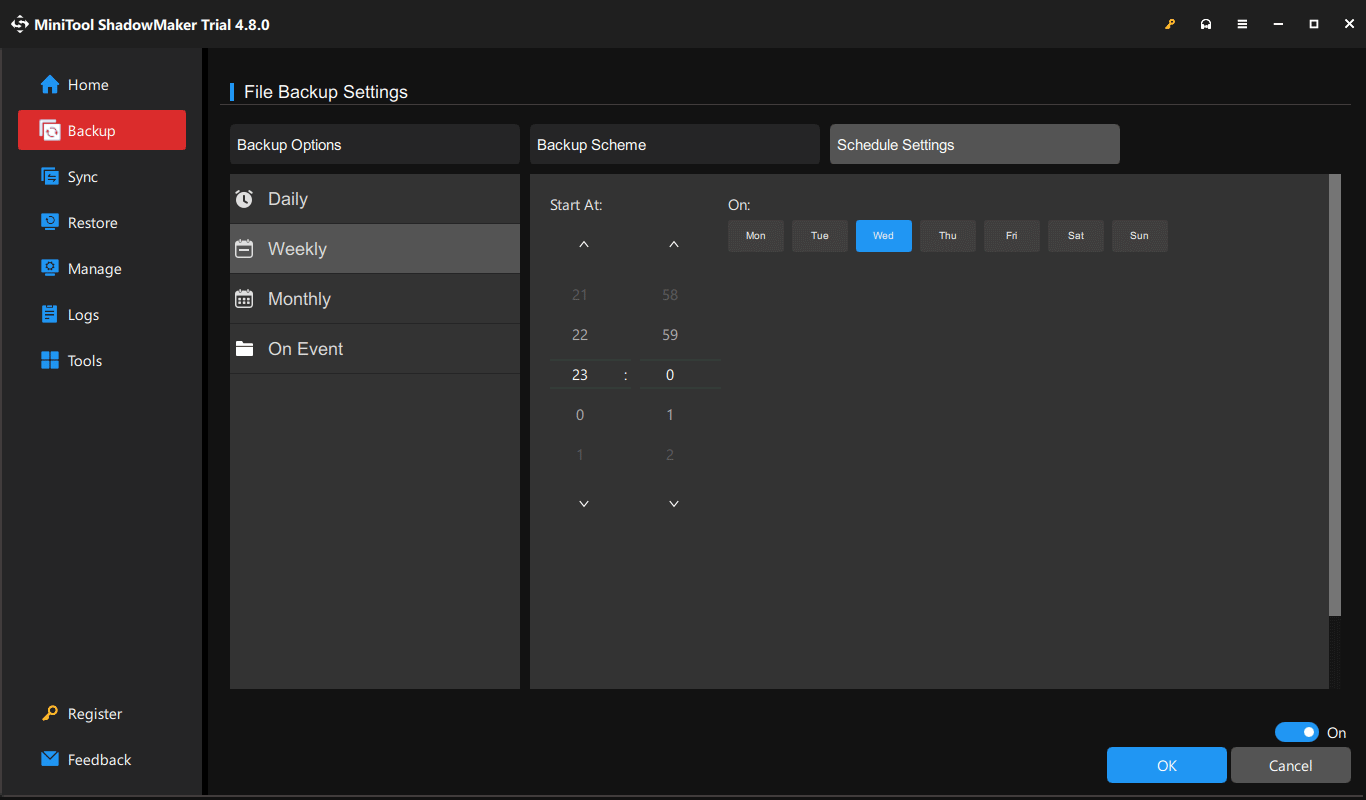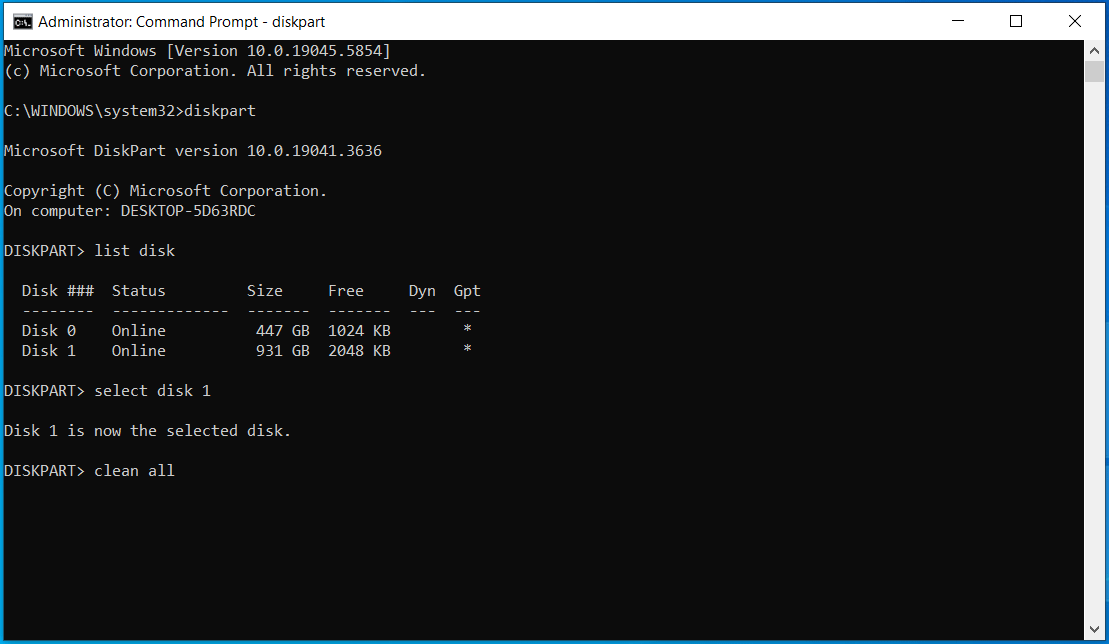What Is Current Pending Sector Count?
CrystalDiskInfo Shows Current Pending Sector Count Caution
CrystalDiskInfo is a free and open-source disk health monitoring utility for Windows. It specializes in monitoring and analyzing your hard disk drives (HDDs), solid-state drives (SSDs), and other storage devices.
After a scan, this tool displays the overall disk health status, temperature, and various SMART (Self-Monitoring, Analysis, and Reporting Technology) data like reallocated sectors, power-on hours, and other attributes.
Once it detects potential issues, it sends warnings to alert you to back up data before a failure occurs.
Commonly, CrystalDiskInfo shows you “Caution” with C5 Current Pending Sector Count, as shown:

What does this warning mean? Learn the details below.
Current Pending Sector Count Meaning
It is a critical SMART parameter, showing the number of unstable sectors on your disk that are yet to be reallocated or remapped. The numeric value of the Current Pending Sector Count will vary depending on the actual situation, which can be 100, 200, or another number.
Unstable sectors refer to sectors that have experienced a read error but are not yet definitely bad. The drive will try to remap them to spare sectors the next write.
- If the write succeeds, the drive determines that the sector is fine, and the pending sector count decreases.
- If the write fails, the drive marks the sector as unusable or bad.
In some cases, a single pending sector cannot always indicate a full failure. It may be a false positive or caused by a power loss during a write operation. However, it is a warning sign that should not be neglected.
If the pending sector count grows over time or remains high, it is a strong indicator of an impending drive failure. Backing up data immediately and replacing the drive is recommended.
What Causes Pending Sectors
Pending sectors are essentially unstable sectors, which can stem from several underlying causes:
- Physical damage: A hard drop or shock can cause the read/write head to crash into the platter, permanently damaging it. Dust particles entering the drive can get between the head and the platter, causing damage.
- Wear and tear: Normal use and aging can degrade the magnetic coating of a disk over time, resulting in unrecoverable sectors.
- Read errors: A drive can fail to read data from a sector due to an improper shutdown, sudden vibrations, loud noises, overheating, or a corrupted file system. The sector is marked as “pending” in case the data can be recovered later.
- Manufacturing flaws: New drives sometimes have minor defects from the factory. They may be detected and reallocated during early use or the initial formatting.
- Firmware issues: In rare cases, the internal firmware of a disk may have a bug that causes it to misidentify a sector as problematic.
Back up Files Regularly to Prevent Data Loss
As stated above, a high or growing Current Pending Sector Count means the drive’s health is degrading and failure may be imminent.
You should keep your storage drive activity to a minimum and immediately back up all your important files to avoid data loss.
To back up data on the hard drive, the professional PC backup software, MiniTool ShadowMaker, is strongly recommended. It is designed to back up and restore the operating system, disks, partitions, files, and folders in Windows 11/10/8/7 and Windows Server 2016/2019/2022/2025.
This free backup software enables you to regularly back up disk data by setting a schedule, such as every day/week/month, or on an event. This is useful if the pending sector count is low and you continue to use the hard drive.
In addition, it supports three common backup types: full, incremental, and differential backup. This is a useful feature, especially when you often have large amounts of data generated. Backing up only the changed data significantly saves storage space.
Download and install MiniTool ShadowMaker on your computer for backup now.
MiniTool ShadowMaker TrialClick to Download100%Clean & Safe
Step 1: Prepare an external hard drive or USB flash drive and connect it to the PC.
Step 2: Launch the software and go to its Backup page.
Step 3: Choose backup source.
- Click the SOURCE section.
- Select Folders and Files > Computer, browse your drive, and choose the files or folders you want to back up.
- Click OK to confirm the selection.

Step 4: Select a storage path for the backup file.
- Click DESTINATION under Backup.
- In the Computer tab, select a USB drive or external drive.
- Click OK.
Step 4: Configure the automatic backups.
- Choose Options > Schedule Settings.
- Enable this option.
- Set a schedule as per your needs.

Step 5: Execute the data backup immediately by clicking Back Up Now.
MiniTool ShadowMaker will automatically backup data at the configured time, which always helps maintain data integrity and safety.
How to Fix Current Pending Sector Count
In some cases, you can restore Current Pending Sector Count to a normal value (zero), particularly if the sectors are “soft” bad sectors (logical or software-related errors).
After the backup, try these methods, such as running CHKDSK, formatting the drive, wiping the drive, and using Hard Disk Sentinel.
If the count continues to rise, it is a sign of a serious problem. Replace the hard drive as soon as possible, as it is likely to fail completely.
Option 1: Run CHKDSK
Windows offers a command-line tool, CHKDSK, that can force the drive to remap the sectors to remove the Current Pending Sector Count caution.
When CHKDSK detects unreadable sectors that fail to respond to data requests, it marks them as “bad”. Then, the utility attempts to move any data that was stored there to a separate area of spare, healthy sectors.
This process prevents the operating system from attempting to write to the specific location again.
Here is how to run a disk check:
Step 1: Input cmd in the Search bar and right-click on Command Prompt under Best match to choose Run as administrator.
Step 2: In the elevated command window, type chkdsk g: /r and press Enter. Replace g: with the drive you wish to scan.

This command locates bad sectors and recovers readable information. Note that /r also covers the functionality of /f (scan for and fix file system errors).
Once the scan is completed, check the pending sector count value using a tool like CrystalDiskInfo and see if the warning disappears.
Option 2: Use Hard Disk Sentinel
Using Hard Disk Sentinel is a proven solution, as evidenced by forums like Reddit, which effectively resolves the issue of a Current Pending Sector Count of 200, 100, or another value.
This disk monitoring software checks the health, temperature, and performance of your hard drives. Additionally, Hard Disk Sentinel can perform a disk surface test.
This test forces the disk to verify the complete surface area, reallocate potential bad sectors, and examine weak sectors.
Now run this utility to restore the pending sectors to normal.
Step 1: Download Hard Disk Sentinel from its official website and install it on your computer.
Step 2: Launch the software and navigate to its main interface, then select the Disk menu.
Step 3: Choose Surface Test > Reinitialize disk surface.

Step 4: Follow the on-screen instructions to begin the disk test.
Option 3: Perform a Full Format
In some cases, formatting the drive can force the drive to write to each pending sector, which effectively fixes the Current Pending Sector Count error.
It is recommended to perform a full format instead of a quick format. This mode writes zeros to every sector of the drive.
During the process, the system identifies any sectors that cannot be written to or read from successfully and marks them as “bad sectors” so they are no longer used.
Take these steps for a full format:
Step 1: Right-click on the Start icon and choose Disk Management.
Step 2: Right-click on the drive that has many pending sectors and select Format.
Step 3: Confirm the format settings, for example, set a volume label, choose a file system, and allocate the unit size (leave it at the default setting).
To run a full format, you should not check Perform a quick format.
Then, click OK.

Step 4: Click OK to confirm the operation.
Repeat the formatting operation for all the volumes on your hard drive.
After formatting, scan your drive again and check if the C5 Current Pending Sector issue is resolved.
Option 4: Secure Erase Your Drive
In addition to formatting, you can try a secure erase to remove the caution. A secure erase can use random data or zeroes to permanently remove all data from a drive.
Windows has the built-in command tool, Diskpart. Its clean all command helps effectively perform a secure erase by overwriting every sector on the selected disk with zeros.
To use it:
Step 1: Run Command Prompt as an administrator.
Step 2: Type diskpart and press Enter to open this utility.
Step 2: Type list disk and press Enter to display all connected hard drives.
Step 3: Input select disk x (replace x with the number of the drive you want to erase) and press Enter.
Step 4: Type clean all and press Enter to securely wipe all data on the selected disk.
Step 5: Exit Diskpart and close Command Prompt.

When completing the process, you may find the pending sectors disappear.
Option 5: Replace the Drive
The last resort is to replace your hard drive if the Current Pending Sector Count keeps growing.
Follow the instructions:
Step 1: Power off your computer completely and unplug all power sources.
Step 2: Hold down the Power button for about 5 seconds to drain residual power.
Step 3: Remove screws to open the computer case.
Step 4: Disconnect the cables and unscrew the old drive from its bracket. Then, remove that drive.
Step 5: Plug the new disk into the same bracket, secure it, and reconnect all the cables.
Step 6: Put the computer case back and screw it into place.
Step 7: Reinstall the operating system from a bootable USB drive.
Bottom Line
This pro guide introduces the meaning of Current Pending Sector Count and how to address the warning. If you are experiencing this annoying issue, back up your data immediately and fix it. If necessary, replace your hard drive.
When facing an issue with MiniTool ShadowMaker, contact us at [email protected].

User Comments :